Derived from the Latin etymon, revolutio, meaning a turn around, the word revolution, refers to the fundamental socio economic and political change, through an overthrow and replacement of the prevalent government and organizational structure. Aristotle classified the revolutions into two types; one culminating into complete change of the existing constitution by another while the other type requires modification of the existing constitution and is more a sort of reformation of the existing system. The revolutions may be political, sudden and violent or slow and progressive. Sometimes a revolution is a powerful overthrow of the ruling party and the prevailing social order. A modern scholar of revolutions, Charles Tilly, has differentiated a top-down seizure of power, a coup, civil war, revolt, and revolution. Conventionally the revolutions, according to him transform the economic, social, and political structures completely as in case of the French Revolution, the Russian Revolution, and the Iranian Revolutions.
1. The French Revolution
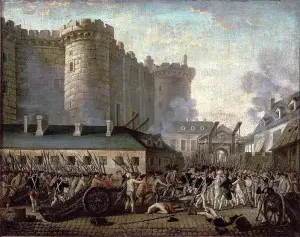
In the history of revolutions, the French revolution occupies a special place. Revolutions are mostly limited to the geographical boundaries of States, but a few revolutions are global in nature. This is because they impact many other countries. The French revolution was a great upheaval in the French history. Starting from 1789 the revolution continued until 1799. At the beginning of the revolution Louis XVI was the king of France and along with his queen Marie-Antoinette from Austria, he pushed the country into grave state of deteriorated economy. The French Finance Minister Jacques Necker invited suggestions to improve economy, whereupon the French thinker Abbe Emmanuel Joseph Sieyes wrote a pamphlet in response. He stated that common people of France were a complete nation without the privileged First and Second Estates, enjoying tax exemption. The oppression ultimately led to the murder of both the King and the Queen. Robespierre, who took over, ruthlessly killed thousands of people without trials, using the infamous guillotine. He too was ultimately overthrown and with the new constitution, France emerged into the modern era of stability and prosperity.
2. The Industrial Revolution
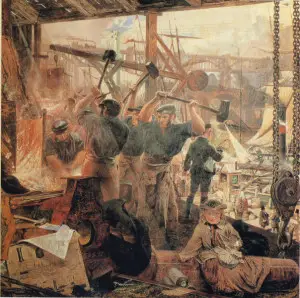
The Industrial revolution is one of the most important and famous revolutions in the history of mankind. It started in Great Britain between 1760 and 1840. Although it started in Great Britain, it quickly spread up to Western Europe and the United States. It was prompted by the progressively increasing use of coal instead of wood, use of machinery in production instead of manual labor, and newly developed sources of energy, particularly the steam power and steam engine. The revolution caused sustainable growth among masses. According to the Nobel Laureate, Robert E. Lucas, Jr. ‘For the first time in history, the living standards of the masses of ordinary people have begun to undergo sustained growth …’.
3. The Russian Revolution
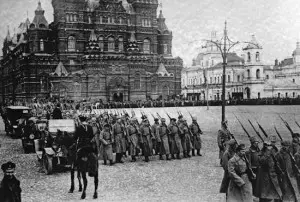
The Russian Revolution refers to a number of revolutions following the February 1917 Revolution. It took place in Saint Petersburg, known as Petrograd at the time of revolution. Continued atrocities caused the chaos and shaped the initial stage of the revolution. Duma, the Imperial Parliament of Russia, took over the control as the army leadership decided not to stand with the rulers and consequently Nicholas II, had to abdicate as the last Emperor of Russia. At the time of the revolution, the Russian Army was already in a very bad state due to its involvement in the First World War.
4. The Iranian Revolution
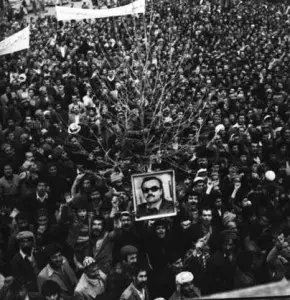
The Iranian Revolution was supported by the United States and the United Kingdom. The revolutionary Muslim leader, Ayatollah Khomeini had thrown the Pehalavi Dynasty under King of Iran, Shah Mohammad Reza Pahlavi. Demonstrations against him started in October 1977 and developed gradually into a strong civil resistance. By December 1978, the strikes brought the affairs of the state to standstill. On January 16, 1978, the Emperor of Iran left Iran and the Loyalist troops fought in streets but failed to regain control and finally collapsed on February 11, 1979 and two weeks later Ayatollah Khomeini, returned to Tehran from exile. Following a referendum Iran became an Islamic Republic and in December 1979, Ayatollah Khomeini took over as the Supreme Commander of Iran.
5. The Xinhai Revolution
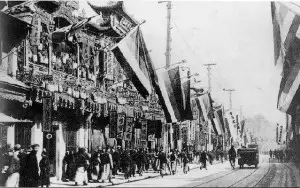
The Xinhai Revolution, also known as the Chinese Revolution replaced the last imperial dynasty of China, the Qing dynasty, with the Republic of China. Since it happened in 1911, the year of Sinhai, in the Chinese calendar, the revolution was named after it. The revolution was a series of revolutions that started on October 10, 1911, from the Wuchang Uprising. The revolution ended the 2000 years of imperial rule and began the republican era. Puvi, had to abdicate as the last emperor. Both the People’s Republic of China and the Republic of China in Taiwan, respect the heroes of the Xinhai Revolution.
6. The People Power Revolution
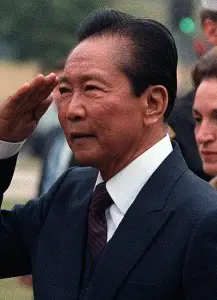
The People Power Revolution, also known as the Philippine Revolution of 1986 started as a series of demonstrations against the oppressive regime, in 1983. Methodology of the revolution mainly comprised of the peaceful civil resistance. Due to the wearing of yellow ribbons by the demonstrators, the revolution was also known as the Yellow Ribbon Revolution. The demonstrations sprouted after the assassination of the Filipino Senator Benigno Aquino, Jr. In addition to the heightened oppression, the demonstrations were also targeted against the electoral fraud. Main venue of the demonstrations was Epifanio de los Santos Avenue, Manila the demonstrations occurred between February 22 and 25, 1986. More than two million civilians participated in the demonstrations and consequently the authoritarian President Ferdinand Marcos, had to quit and leave for U.S.
7. The American Revolution
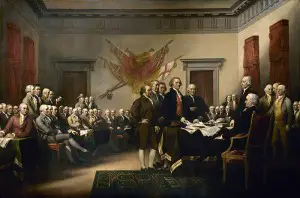
The American Revolution was a collective effort of thirteen North American colonies to get rid of the British rule. To begin with, the revolutionaries rejected the non-representative Parliament of the Great Britain and it was followed by the expulsion of all the royal officials. It resulted in the formation of Provincial Congress by each colony, by the end of 1775. These colonies exercised the self-rule but still recognized the inclusion of the British Crown. Thomas Jefferson wrote the United States Declaration of Independence in July 1776 and it was approved by Congress unanimously.
8. The Glorious Revolution
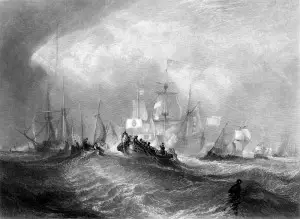
The Glorious Revolution is the name given to the overthrow of King James II of England by a union of the English Parliamentarians along with the Dutch stadtholder William III of Orange-Nassau. The King’s religious policies caused unrest among people and were opposed by the political leadership. In November 1688, William invaded England after crossing the North Sea and the English Channel. It took only a couple of minor clashes to take over England, and this was mainly due to the lack of resolve on the part of the English Emperor. In the end William’s ascended the British throne as William III of England along with his Queen Mary II of England.
9. The Nicaraguan Revolution

Since its establishment as a Spanish Colony in the 16th century, Nicaragua had been continuously oppressed by the dictatorial regime. The oppression was so bad that within 35 years, a population of more than two million was reduced to less than 8,000 people. Frente Sandinista de Liberacion Nacional commonly known as FSLN was the Sandinista National Liberation Front It resisted the dictatorship of Somoza in 1960s and 1970s. FSLN ultimately ousted the dictatorship after a violent campaign. An estimated 10,000 people were killed during the revolution and another 30,000 people were killed in the contra war. FSLN ruled the country from 1979 to 1990.
10. The Siamese revolution
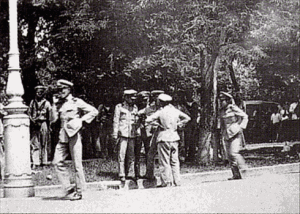
The Siamese revolution was a popular uprising against the pro foreign Siamese King Narai of the Siamese Ayutthaya Kingdom, the current Thailand. One of Narais close Military advisors, Phetracha, took advantage of the old and sick Narai, and killed his Christian heirs. Afterwards, he married, Narai’s daughter and ascended the throne. To reduce the French influence, he ousted the French army from the country. The most prominent feature of the revolution was the siege of Bangkok, when several thousand Siamese’s military men besieged the French fortress within the city for four months. As a result of the revolution Siam was cut off from the West for a long time.
Conclusion
In spite of many researches, the mode, time of occurrence, and severity of a revolution, is not predictable with a scientific precision, though in some cases, they are predictable with a fair degree of reliability. It is like a cloud system which is indicative of a lightning, showers, thunder storms, and an oncoming heavy downpour. The secret agencies of governments, in fact function like meteorological department, and keep the rulers aware of the pulse, temperature and mood of the pressure groups. In no other case ,more blood has been shed in the history of mankind, than in case of the preventive actions taken and efforts made by the rejected rulers to extend their rule, in the face of an imminent revolution.










Leave a Reply